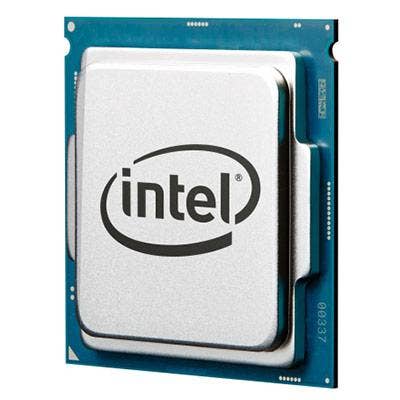Intel Lifts Curtain On 8th-Gen Core Enthusiast Processor With AMD Graphics

Just a few days following widespread security concerns around Intel's processors, the company has launched its newest enthusiast powerhouse Core processor, which uses AMD graphics technology.
The eighth-generation Core processor, which was launched during CES on Sunday, will pair Intel’s mobile-targeted Core H-series processor, second-generation high-bandwidth memory and an AMD Radeon RX Vega M discrete graphics chip.
"[There's] more freedom for OEMs to be creative and deliver innovative thin and light designs with improved thermal dissipation," said Chris Walker, Vice President of Intel's Client Computing Group and General Manager of Intel's Mobility Client Platform. "[The processor] also delivers space to add new features, create new board layouts, explore new cooling solutions or increase battery life."
[Related: 30 Hot Products At CES 2018]
The new chips are debuting following the revelation last week of two big major chip-related security vulnerabilities called Meltdown and Spectre. Intel has said it has already issued updates for the majority of processors introduced in the last five years. Furthermore, the company said by the end of next week it "expects to have issued updates for more than 90 percent of processor products introduced within the past five years."
However, the Santa Clara, Calif.-based company declined to further comment to CRN on whether the same security issues impact its new eighth-generation Core processors with Radeon graphics.
Intel's eighth-gen Core processor is the first one to incorporate AMD Radeon RX Vega M Graphics, custom discrete GPUs that integrate key features optimizing for low power, front-end and back-end processing and decreased silicon footprint.
Intel's eight-generation Core enthusiast processor is connected to a custom discrete Radeon RX Vega M graphics processor through Intel’s high-speed PCI-express lanes directly connected to the processor. This enables the bandwidth needed for the CPU to feed the graphics compute units to run up to 1190 megahertz boost frequency and deliver smooth frame rates on games.
The new chip design also includes a technology called EMIB, a smart intelligent bridge enabling heterogeneous silicon to transmit information nearby, enabling faster and more efficient products in smaller sizes.
Intel’s powerful 45W mobile processor delivers four cores and eight threads on each processor. Users will see a frequency of up to 4.2 gigahertz due in part to Intel Turbo Technology 2.0, which dynamically increases the processor’s frequency by taking advantage of thermal and power.
The new chip will reduce the silicon footprint to less than half that of standard discrete components on a motherboard, creating more flexibility for OEMs to add features such as new board layouts, cooling solutions or increased battery life.
"It should be a win for enthusiast consumers if it performs as promoted," said Randy Copeland, president and CEO of Velocity Micro, a systems builder and Intel partner based in Richmond, Va. "If it can – and I think it will – elevate graphics beyond the Intel integrated package, then it will offer a competitive GPU solution with Nvidia, but in a smaller package that should run games well, be easier to cool, allow for a smaller and thinner laptop than typical discreet GPU models, and also usher in more higher resolution displays."
Intel didn't reveal details on pricing on its newest processor, which is for the high performing, small form factor computers like 2-in-1’s, thin and light notebooks and mini-PCs., but said that consumers could look out for the chip in systems from OEM partners in the first half of 2018.